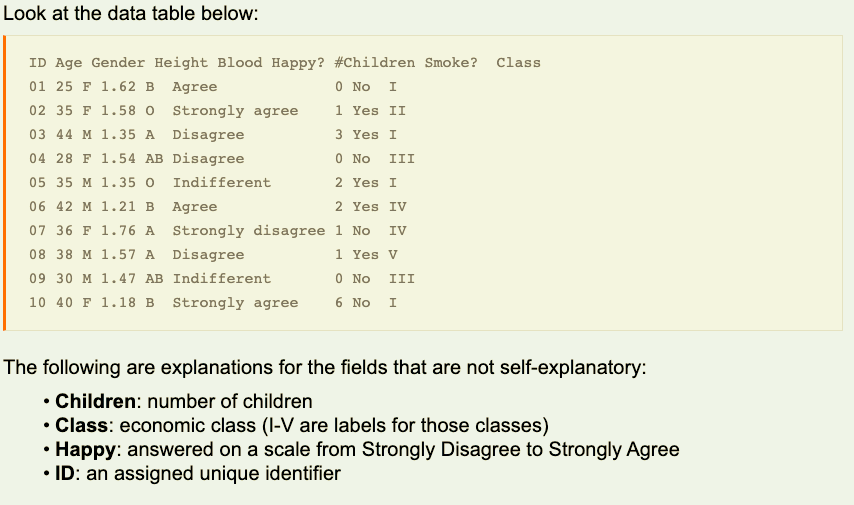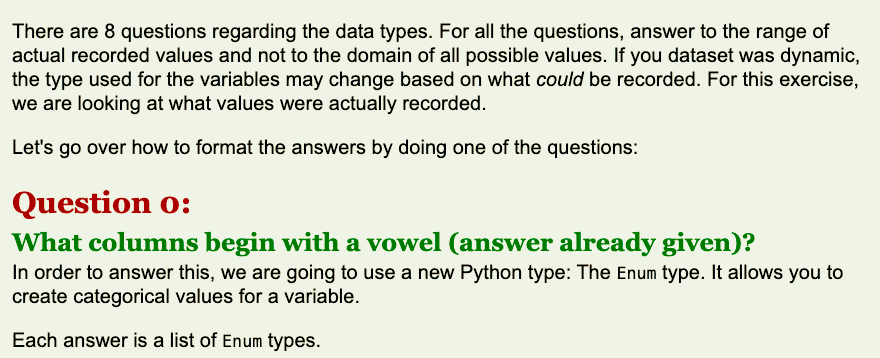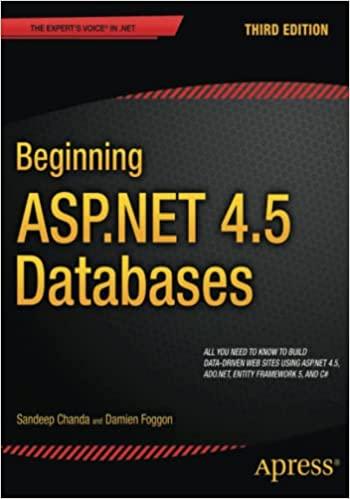Type code in python










Look at the data table below: Class ID Age Gender Height Blood Happy? #Children Smoke? 01 25 F 1.62 B Agree 02 35 F 1.58 O Strongly agree 1 Yes II 03 44 M 1.35 A Disagree 3 Yes I 04 28 F 1.54 AB Disagree O No III 05 35 M 1.35 O Indifferent 2 Yes I 06 42 M 1.21 B Agree 2 Yes IV 07 36 F 1.76 A Strongly disagree 1 No IV 08 38 M 1.57 A Disagree 1 Yes V 09 30 M 1.47 AB Indifferent O No III 10 40 F 1.18 B Strongly agree 6 No I The following are explanations for the fields that are not self-explanatory: Children: number of children Class: economic class (1-V are labels for those classes) Happy: answered on a scale from Strongly Disagree to Strongly Agree ID: an assigned unique identifier There are 8 questions regarding the data types. For all the questions, answer to the range of actual recorded values and not to the domain of all possible values. If you dataset was dynamic, the type used for the variables may change based on what could be recorded. For this exercise, we are looking at what values were actually recorded. Let's go over how to format the answers by doing one of the questions: Question o: What columns begin with a vowel (answer already given)? In order to answer this, we are going to use a new Python type: The Enum type. It allows you to create categorical values for a variable. Each answer is a list of Enum types. |from enum import Enum # do not change this cols Enum('columns', ['ID', 'Age', 'Gender', 'Height', 'Blood', 'Happy', 'Children', 'Smoke', 'Class']) def question(): # return the correct columns # both ID and Age begin with a vowel return [cols. ID, cols.Age] Question 1: What variable(s) are classified as quantitative variable(s)? Question 2: What variable(s) are classified as qualitative variable(s)? Question 3: What variable(s) are classified as continuous variable(s)? Question 4: What variable(s) are classified as discrete variable(s)? Question 5: What variable(s) are classified as ordinal variable(s)? Question 6: What variable(s) are classified as nominal variable(s)? Question 7: What variable(s) are classified as binary variable(s)
















